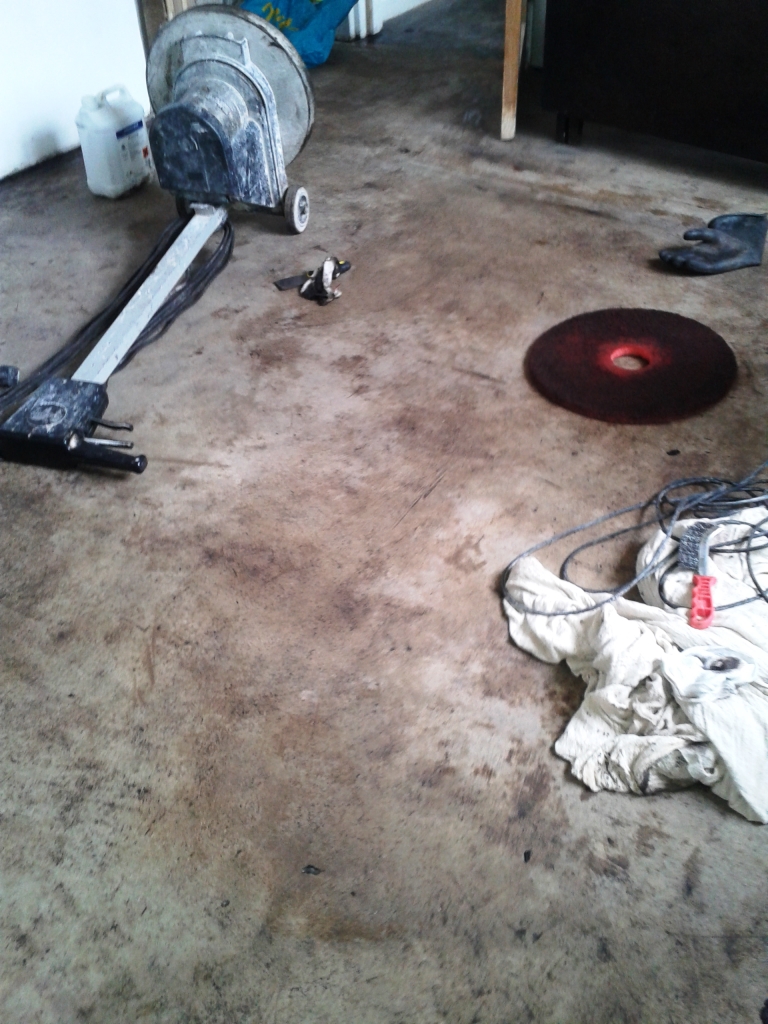Linoleum tiles are an attractive choice of flooring for home use. The tiles are made from organic materials, which include linseed oil, limestone and sawdust. Pigments are also added to the mixture, which gives the tiles a uniform color throughout. The tiles are a good choice if you prefer natural products for your floor. You also have the opportunity to mix and match tiles to create your own unique style. A properly installed and well maintained linoleum tiled floor can last for several years in good condition. However, damages are still possible, which may leave you with broken or chipped tiles. Below is a useful guide to help you fix the damage.
What You'll Need
- Grease pencil
- Matching linoleum tile
- Soft-bristled brush
- Box cutter
- Chisel
- Hammer
- Pencil
- Ruler
- Thin cardboard
- Scissors
- Masking tape
- Wood glue
- Popsicle stick
- Damp sponge
- Large brick
- Acrylic floor sealer
- Paint roller
Step 1 – Inspect Floor
Carefully examine your tiles to identify those that are broken or chipped. Mark the damaged tiles with a grease pencil. It is easier to undertake repairs all at once. If the damage on the broken or chipped tiles isn’t extensive, proceed to Step 2. In cases where the breakage exceeds 2 inches or the tile is severely chipped, it is best to replace the entire tile.
Step 2 – Obtain Loose Tiles
Check whether you have any tiles that remained from the original installation. If unavailable, purchase a few tiles that match yours from a flooring vendor or hardware store. This allows you to create as close to a uniform appearance as you can.
Step 3 – Remove Damaged Portion
Draw a line around the area of tile you wish to remove. Use a box cutter to cut out the damaged tile. Detach the tile from the subfloor with the help of a chisel and hammer.
Step 4 – Clean the Subfloor
Clear out dust and fine debris from the subfloor with a brush. This leaves you with a clean surface, which facilitates effective attachment.
Step 5 – Cut out Replacement Tile
Create a stencil out of thin cardboard with the help of a pencil, ruler and pair of scissors. Attach the stencil onto a replacement tile with some masking tape. Use a box cutter to cut out the replacement portion.
Step 6 – Install New Piece
Spread a light coat of wood glue with the help of a popsicle stick onto the back of the replacement piece. Apply some glue along the sides of the piece as well. Fit the piece onto the subfloor. Press the tile firmly down so that it attaches well. If any glue oozes onto the surface, wipe away with a damp sponge.
Step 7 – Place a Weight
Place a large brick or weight on the tile. This facilitates proper adherence of the replacement piece onto the subfloor. Leave the brick in place for 24 hours.
Step 8 – Apply Floor Sealer
Remove the brick. Clear away fine debris with your brush. Use a paint roller to apply an acrylic floor sealer over the repaired tile.
Source: www.DoItYourself.com






